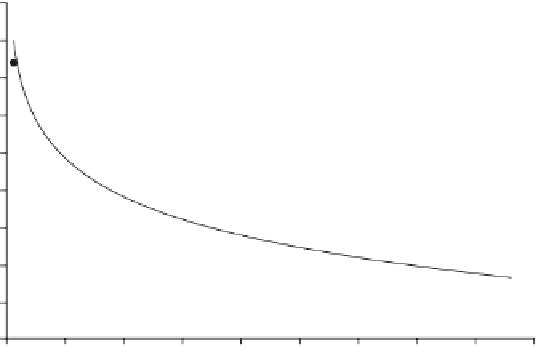Civil Engineering Reference
In-Depth Information
90
80
70
60
50
40
30
20
10
0
0
50
100
150
200
250
300
350
400
450
Time (h)
15.5
Secondary emission of formaldehyde in a photocatalytic paint
during long-term irradiation.
Pretreatment of the photocatalytic paint prior to commercial distribution
It has been repeatedly observed that the amount of carbonyl compounds
emitted diminishes with repeated uses of the photocatalytic material, indi-
cating that the emitted carbonyl compounds depend on the extent of the
previous irradiation of the supporting material. In order to confi rm this
effect, the photocatalytic paint has been irradiated for a long period of time,
during which periodic measurements have been taken of the amount of
carbonyl compounds. As can be observed in Fig. 15.5, the amount of emitted
formaldehyde diminished exponentially with the irradiation time. A similar
effect was found for all the carbonyl compounds.
As a consequence of this effect, it would be possible to minimize the
amount of emitted carbonyl compounds by pre-treating the photocatalytic
paint. It could therefore be irradiated with UV light prior to its commercial
distribution, given the emission of carbonyl compounds. Recent experi-
ments carried out under controlled conditions indicate that the secondary
emission of carbonyl compounds after continuous irradiation of 3 weeks
can be considered to be negligible (Geiss
et al.
, 2012).
15.5 Future trends
The present chapter has outlined the current state of the art in the develop-
ment of photocatalytic paints. Further research is still needed in order to
achieve a breakthrough, in the following areas:





Search WWH ::

Custom Search